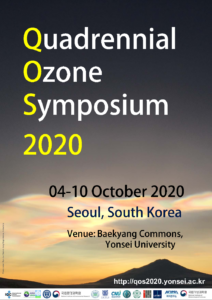A selection of new science articles from the past week of interest to the SPARC community (a SPARC Office choice).
Highlight articles (office choice):
Reduction in surface climate change achieved by the 1987 Montreal Protocol. By R. Goyal et al. in the Environmental Research Letters.
The scientific challenge of understanding and estimating climate change. By T. Palmer and B. Stevens in the Proceedings of the National Academy of Sciences.
Tropical climate variability in the Community Earth System Model: Data Assimilation Research Testbed. By J. Eliashiv, A.C. Subramanian, and A.J. Miller in Climate Dynamics.
Potential problems measuring climate sensitivity from the historical record. By A. Dessler in the Journal of the Climate.
Evaluating the performance of past climate model projections. By Z. Hausfather et al. in the Geophysical Research Letters.
– – See also: nature News article at: https://www.sciencemag.org/news/2019/12/even-50-year-old-climate-models-correctly-predicted-global-warming
Stratospheric Sulfate Aerosol Geoengineering Could Alter the High‐Latitude Seasonal Cycle. By J. Jiang et al. in the Geophysical Research Letters.
The Western Tibetan Vortex as an Emergent Feature of Near‐Surface Temperature Variations. By R.J. de Kok and W.W. Immerzeel in the Geophysical Research Letters.
Seasonal evolution of the effects of the El Niño–Southern Oscillation on lower stratospheric water vapor: Delayed effects in late winter and early spring. By Y. Liao, Q. Chen, and X. Zhou in Earth and Planetary Physics.
A Cautionary Note on the Long‐term Trend in Activity of the Madden‐Julian Oscillation During the Past Decades. By M. Lyu, X. Jiang, and Z. Wu in the Geophysical Research Letters.
Building long homogeneous temperature series across Europe: a new approach for the blending of neighboring series. By A.A. Squintu et al. in the Journal of Applied Meteorology and Climatology.
Discussion papers – open for comment:
Reaching 1.5 °C and 2.0 °C global surface temperature targets using stratospheric aerosol geoengineering. By S. Tilmes et al. in Earth System Dynamics.

